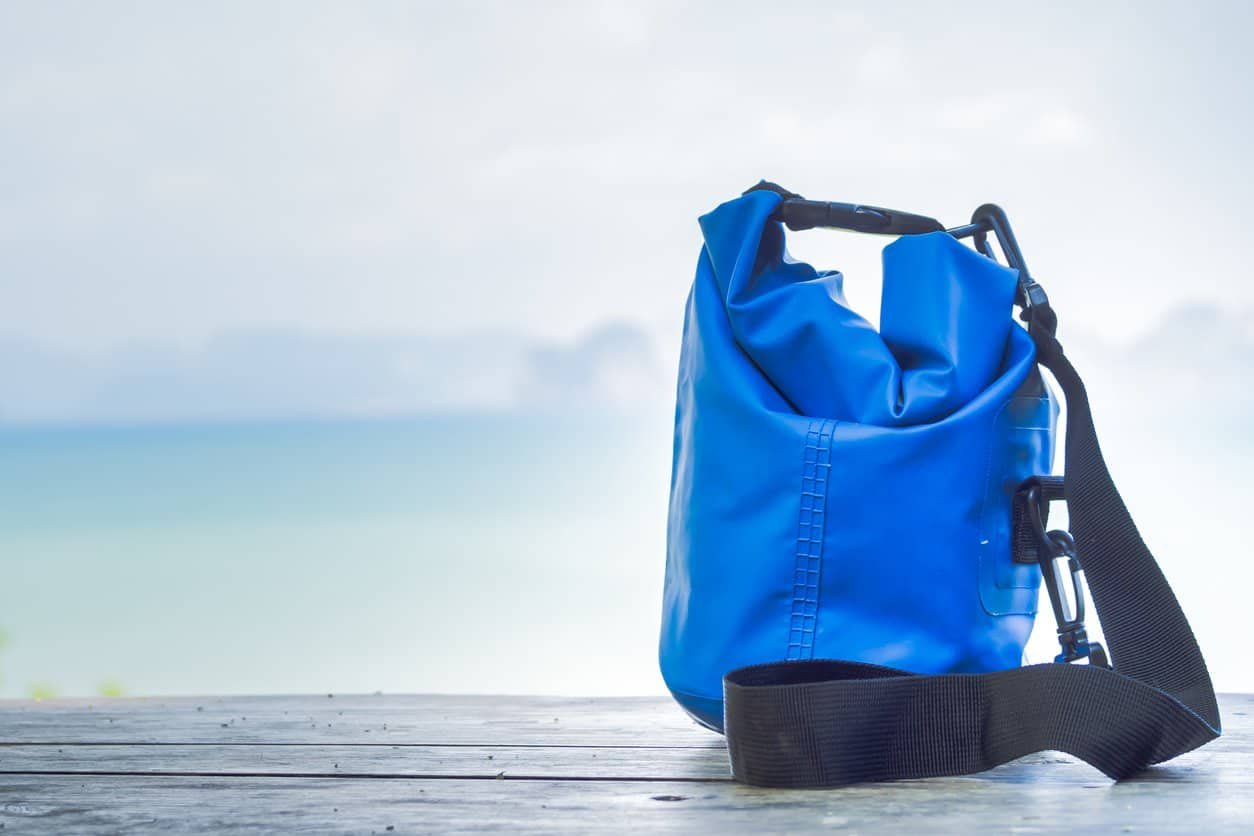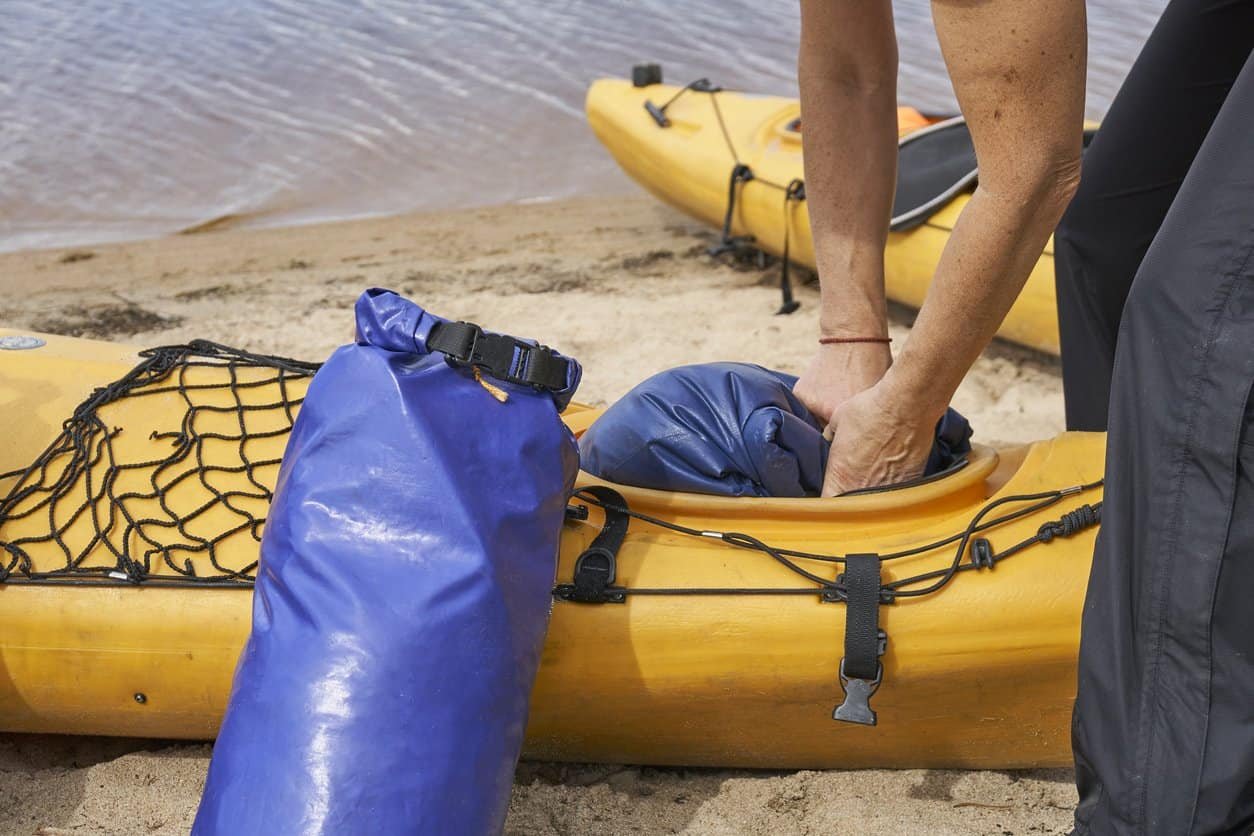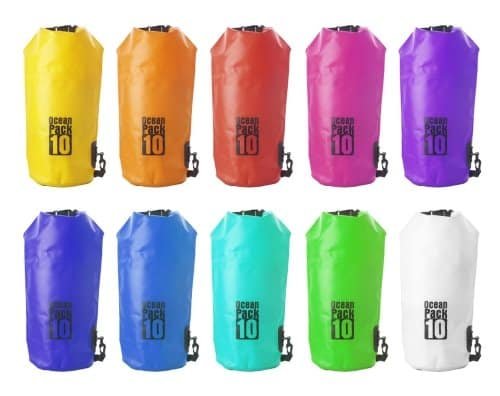Embarking on outdoor adventures often means stepping away from the conveniences of modern living, bringing you closer to nature’s raw beauty. Among these missing conveniences is the luxury of fresh, clean clothing, a challenge that becomes all the more pressing on extended trips into the wilderness. Yet, the ingenuity of outdoor enthusiasts knows no bounds, turning a simple piece of gear—a dry bag—into an innovative solution for laundry in the great outdoors. This approach not only addresses the need for clean clothes but does so in a way that’s both water-efficient and environmentally considerate. Whether you’re navigating the serene waters in a kayak, setting up camp in the secluded backcountry, or trekking through remote landscapes, the ability to transform your dry bag into a makeshift washing machine offers a blend of practicality and sustainability. This guide aims to walk you through the process of doing laundry in a dry bag, ensuring that even miles away from the nearest laundromat, you can maintain a semblance of civilization amidst the wilderness.
Quick Insight
The concept of using a dry bag for laundry while on the move is a testament to the resourcefulness of outdoor enthusiasts. This method, blending simplicity with necessity, reveals a quick insight into the adaptability required when embracing the great outdoors. The dry bag, traditionally used to keep belongings dry, assumes a dual role as a portable washing machine, illustrating the innovative ways adventurers maintain comfort and hygiene on extended journeys. This insight not only showcases the versatility of outdoor gear but also highlights the importance of sustainable practices in natural settings. By using minimal water and biodegradable soap, this method respects the environment while providing a practical solution to a common challenge faced in the wilderness. It’s a reflection of how, with a bit of creativity, the limitations of outdoor living can transform into opportunities for sustainable living, even in the most remote corners of the world.

The Convenience of Dry Bag Laundry
The convenience of dry bag laundry extends far beyond just having clean clothes; it represents a fusion of practicality, sustainability, and independence that enriches the outdoor experience. Here’s a deeper exploration into why this innovative laundry solution is gaining popularity among adventurers:
Space and Weight Savings
When packing for an outdoor adventure, every inch of space and ounce of weight counts. The dual functionality of a dry bag as both a protective gear container and a washing machine means one less item to carry, making it an ideal solution for minimizing load without compromising on essentials. This multi-use approach is particularly appealing to backpackers, kayakers, and anyone looking to optimize their gear for efficiency and utility.
Water Efficiency
In environments where water is a precious commodity, the ability to do laundry with minimal water is a significant advantage. Dry bag laundry methods typically require less water than traditional washing, making them ideal for areas where water conservation is critical. By controlling the amount of water and soap used, adventurers can minimize their environmental footprint, ensuring the natural landscapes remain pristine for future explorers.
Independence from Facilities
One of the most liberating aspects of dry bag laundry is the independence it affords. Remote locations often lack access to conventional laundry facilities, and this method provides a way to maintain cleanliness and comfort without relying on external resources. It empowers adventurers to extend their stays in the wild, making longer, more immersive experiences possible without the concern of running out of clean clothes.
Environmental Consideration
The use of biodegradable soap and the minimal water required for dry bag laundry align with the Leave No Trace principles, advocating for outdoor practices that minimize impact on the environment. This method allows adventurers to maintain personal hygiene while also protecting the water sources and ecosystems they come to enjoy, reinforcing the ethos of responsible and sustainable outdoor recreation.
Adaptability to Various Conditions
Whether facing the damp conditions of a rainforest or the arid landscapes of a desert, the dry bag laundry method proves adaptable and reliable. Its effectiveness is not contingent on weather conditions or access to specific types of water, making it a universally applicable solution across diverse environments. This adaptability enhances its appeal, ensuring that regardless of where the adventure leads, the ability to clean clothing remains uncompromised.
What You Need
To transform your dry bag into an efficient laundry system, a few essentials are required. These items are carefully chosen to maximize cleanliness while ensuring the process is as environmentally friendly and efficient as possible. Here’s an in-depth look at what you’ll need to get started:
A Suitable Dry Bag
Size Matters: Opt for a dry bag with a capacity of 10-20 liters. This size is ideal for personal laundry loads, allowing enough space for clothes to move around and get cleaned properly. A larger bag can handle more items but may be cumbersome to manage and require more water.
Material Consideration: Ensure the dry bag is made of durable, waterproof material capable of withstanding vigorous shaking and scrubbing. Most dry bags designed for kayaking or camping are suitable for this purpose.
Biodegradable Soap
Eco-friendly Choice: Select a biodegradable soap that’s gentle on the environment and effective at cleaning. These soaps break down naturally and have a minimal impact on ecosystems, making them perfect for outdoor use.
Concentration: A concentrated formula is ideal, as you’ll need only a small amount for each wash, reducing weight in your pack and minimizing waste.
Water Source
Freshwater Availability: Plan to use a nearby freshwater source if possible, but always be mindful of Leave No Trace principles. Collect water in a way that doesn’t disturb natural habitats or water sources.
Conservation: Be conscious of water usage. The goal is to use just enough water to submerge and agitate your clothes, without excess.
Dirty Laundry
Fabric Selection: Lightweight and quick-drying fabrics are best suited for dry bag laundry. They clean easily, dry faster, and reduce the overall weight and bulk of your laundry load.
Preparation: Turn garments inside out to target the dirtiest areas and secure any straps or ties to prevent tangling.
Additional Tools (Optional)
Scrub Brush: A small, soft-bristled brush can help tackle tough stains without damaging fabric.
Clothesline or Drying Rack: For drying clothes post-wash. Lightweight and portable options are available for backpackers and travelers.
Mesh Bag: Placing clothes in a mesh laundry bag before putting them in the dry bag can help keep items contained and prevent excessive tangling during the wash cycle.
Step-by-Step Guide to Dry Bag Laundry
Turning your dry bag into a makeshift washing machine is a simple, yet ingenious way to keep your clothes clean while on outdoor adventures. Here’s a more detailed step-by-step guide to ensure you get the best results from your dry bag laundry sessions:
Step 1: Preparation
Sort Your Laundry: Just like at home, sorting clothes can help. Separate light and heavy fabrics to ensure even cleaning and prevent damage to delicate items.
Treat Stains: Apply a small amount of biodegradable soap directly to any stains or heavily soiled areas before you begin, giving them a head start in the cleaning process.
Step 2: Loading the Bag
Don’t Overload: Fill the dry bag no more than half full with clothes. This allows enough space for movement and agitation, ensuring clothes get thoroughly cleaned.
Balance Loads: Distribute clothes evenly to avoid lopsided loads that might not clean well or could damage the bag during the shaking process.
Step 3: Adding Water and Soap
Optimal Water Level: Add just enough water to submerge the clothes, typically about two to three times the volume of the laundry load. This conserves water while allowing sufficient movement for cleaning.
Soap Quantity: Use a small squirt of biodegradable soap – too much can be hard to rinse out and isn’t necessary for effective cleaning.
Step 4: Seal and Shake
Air Removal: Before sealing, press out as much air as possible from the dry bag. This creates a vacuum effect that aids in the agitation process.
Shake Vigorously: Shake the bag vigorously for 3-5 minutes. The movement mimics the agitation cycle of a traditional washing machine, dislodging dirt from the fabric.
Step 5: Rinse Cycle
First Rinse: Drain the soapy water and refill with clean, fresh water for the rinse cycle. Shake the bag again to remove soap from the clothes.
Repeat if Necessary: It may take several rinses to completely remove all soap, especially if you’ve used more than the recommended amount.
Step 6: Drying
Wring Gently: Carefully wring out clothes to remove excess water. Be gentle with delicate fabrics to avoid stretching or damage.
Air Dry: Hang clothes to dry on a clothesline, over a branch, or on any clean surface in a well-ventilated area. Direct sunlight can help speed up the drying process but may fade some fabrics.
Tips for Effective Dry Bag Laundry
- Cold to Lukewarm Water: Hot water can affect the waterproofing of some dry bags and isn’t necessary for effective cleaning with the right biodegradable soap.
- Regular Shaking: Periodically shake the bag during the soaking phase to help loosen any embedded dirt.
- Use a Towel: For extra water extraction post-rinse, lay clothes flat on a towel, roll the towel up, and gently press to absorb moisture.

Maximizing Efficiency with Dry Bag Laundry
Maximizing efficiency with dry bag laundry involves a blend of technique, planning, and understanding the limitations and capabilities of this unique washing method. By optimizing each step of the process, you can achieve clean clothes with minimal environmental impact and water usage. Here’s how to enhance the efficiency of your dry bag laundry sessions:
Efficient Packing and Preparation
Selective Laundry: Prioritize washing clothes that truly need it. Lightweight and quick-drying fabrics are ideal as they clean easily and dry faster, reducing the overall laundry load.
Pre-soak Strategy: For particularly dirty items, consider a pre-soak in a water body, following Leave No Trace principles. This initial soak can help loosen dirt before the actual wash, making the cleaning process more efficient.
Optimizing the Washing Process
Shake Smartly: Instead of constant, vigorous shaking, use intermittent agitation. Shake vigorously for a minute, let the clothes soak for a bit, and then shake again. This method can be less tiring and just as effective.
Use Natural Agitators: Adding small, smooth stones or a clean, rubber ball to the dry bag can help agitate the clothes as you shake the bag, enhancing the cleaning action without damaging the fabric.
Water Conservation Techniques
Reuse Water: If you’re doing multiple batches, reuse the rinse water from a previous batch as the wash water for the next. This technique is especially useful in water-scarce environments.
Spot Cleaning: Instead of washing entire garments for a few spots, apply soap directly to stains and scrub lightly before the full wash. This targeted approach can reduce the need for extensive washing.
Drying Efficiency
Effective Wringing: Roll items tightly to press out excess water before hanging to dry. This step is crucial for speeding up drying times, particularly for heavier fabrics.
Strategic Hanging: Maximize air flow and sunlight exposure when drying clothes. Hang items separately and in a sunny, breezy spot. For quick-dry fabrics, even laying them flat on warm rocks can be effective.
Environmental Considerations
Eco-Friendly Soap: Always choose a soap that’s as concentrated and eco-friendly as possible. This reduces the amount needed, minimizing the environmental footprint.
Cold Water Washing: Utilize cold water for both washing and rinsing to conserve energy and protect sensitive fabrics. Cold water is surprisingly effective with the right soap and agitation.
The Multi-Use Principle
Versatility of the Dry Bag: Remember, the dry bag serves multiple purposes beyond laundry. It can be used for waterproof storage, as a makeshift shower, or even to carry water in a pinch. Embracing its versatility can help reduce your overall gear load.
Minimizing Environmental Impact
Minimizing the environmental impact of doing laundry in a dry bag is crucial for preserving the natural beauty and integrity of outdoor spaces. Here’s an expanded approach to ensuring your laundry practices are as eco-friendly as possible:
Selecting the Right Soap
Biodegradable Options: Opt for soap that is not only biodegradable but also phosphate-free and low in surfactants. Such soaps reduce the impact on aquatic life and ecosystems when used responsibly outdoors.
Concentrated Formulas: Use concentrated soap sparingly to minimize residue left in the environment. A little goes a long way, and overuse can lead to unnecessary pollution.
Water Use and Disposal
Conservative Water Use: Be mindful of the amount of water used for washing and rinsing. Use just enough water to submerge your clothes in the dry bag, reducing the overall water needed and minimizing the greywater produced.
Responsible Greywater Disposal: Follow Leave No Trace principles by disposing of used water at least 200 feet (about 60 meters) away from any water sources, trails, and camp sites. Scatter water broadly to avoid concentrating soap residues in one area, which can be harmful to the soil and water.
Natural Cleaning Agents
Alternative Cleaning Methods: Consider using natural cleaning agents like baking soda or lemon juice for light cleaning tasks. These alternatives can be effective for odor removal and are less harmful to the environment than commercial soaps.
Impact on Wildlife and Habitats
Avoid Washing Directly in Natural Water Bodies: Never use soap directly in lakes, rivers, or streams as it can disrupt the natural balance and harm aquatic organisms. Always wash a safe distance away from natural water bodies.
Awareness of Local Regulations: Be aware of and comply with local guidelines regarding soap use and greywater disposal, especially in protected areas or near sensitive habitats. Regulations are designed to protect these environments and should be followed strictly.
Sustainable Practices
Washing Frequency: Reduce the frequency of washes by wearing clothes more than once before washing, where practical. This not only saves water and soap but also reduces wear and tear on your garments.
Eco-friendly Gear: Invest in eco-friendly and quick-drying clothing designed for outdoor activities. These materials often require less intensive washing and dry more quickly, reducing the need for frequent laundry.
Education and Advocacy
Share Best Practices: Educate fellow travelers and campers on eco-friendly laundry methods. Promoting sustainable practices within the outdoor community can amplify the positive impact on the environment.
Support Conservation Efforts: Engage with and support conservation organizations that work to protect the wilderness areas we all enjoy. Responsible outdoor practices, including how we manage laundry, contribute to these broader conservation goals.

FAQ
Q1: Can any dry bag be used for laundry?
A: Most dry bags work, but opt for a 10-20 liter durable bag. Make sure it’s waterproof and sturdy enough for washing activities.
Q2: Is outdoor soap use environmentally safe?
A: Yes, if you use biodegradable soap sparingly and dispose of water responsibly, away from natural water sources, following Leave No Trace principles.
Q3: How can I dry clothes quickly when it’s humid or cold?
A: After wringing clothes, hang them in a breezy spot or use quick-dry fabrics. Avoid dense humidity areas for faster drying.
Q4: Does this method clean as well as a washing machine?
A: It’s effective for light to medium soiled clothes but may not match a machine’s power for heavily soiled items, making it suitable for outdoor and travel use.
Conclusion
Using a dry bag for laundry cleverly addresses how to keep clothes clean outdoors, embodying outdoor resourcefulness and environmental care. This method, ideal for adventurers, balances cleanliness with minimal environmental impact. By utilizing biodegradable soap, conserving water, and practicing Leave No Trace, you ensure the outdoors remain pristine. This approach reflects the broader outdoor spirit: innovation, respect for nature, and sustainable adventuring.

